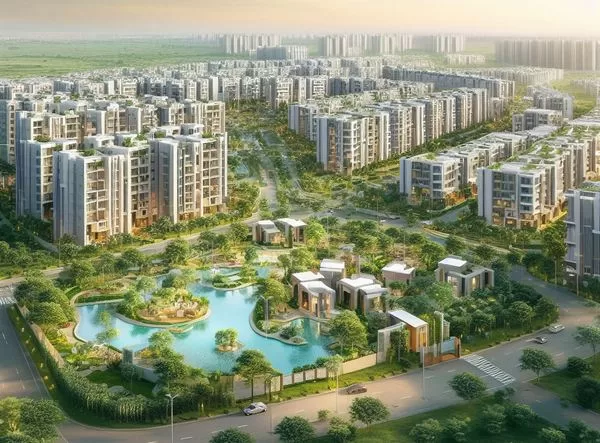– by Akash Pharande, Managing Director – Pharande Spaces
India’s battle against worsening air quality is reshaping its residential real estate landscape. As urbanization, industrialization, and population growth propel this environmental challenge, home buyers are increasingly seeking healthier living spaces.
The Heart of the Problem: City Centers
Indian city centers, notorious for their high pollution levels, suffer from several contributing factors:
· Traffic Congestion: The bustling city centers, with their dense population and heavy traffic, lead to significant vehicular emissions.
· Industrial Emissions: Proximity to industrial areas, often equipped with outdated pollution control technologies, exacerbates the problem.
· Urban Heat Island Effect: A concentration of concrete structures and human activities amplifies city temperatures, increasing pollutant levels.
· Lack of Greenery: The dearth of parks and green spaces in overdeveloped urban centers deprives these areas of natural air filters.
A Breath of Fresh Air: Suburban Shift
In contrast, the suburbs, with their lower population densities and abundant open spaces, offer a respite from urban pollution. Planned cities like Chandigarh, Navi Mumbai, and PCMC (Pimpri-Chinchwad Municipal Corporation) exemplify the separation of industrial and residential zones, enhancing air quality in these outskirts.
In unplanned areas, the suburban paradise faces threats from rapid real estate development, potentially transforming green sanctuaries into urban-like polluted environments.
Integrated Townships – A Breath of Fresh Air
Addressing this dilemma, the real estate industry introduces integrated townships, a model designed to withstand the future’s environmental challenges.
– Greener Living Spaces: Emphasizing parks and gardens, these townships offer a greener environment.
– Minimized Vehicular Pollution: By housing schools, shopping areas, and recreational facilities, townships reduce the need for external commutes.
– Eco-Friendly Infrastructure: Features like rainwater harvesting and waste recycling promote a sustainable living environment.
– Urban Heat Island Mitigation: Integrated township development plans include large green spaces, tree-lined streets, artificial water bodies, and renewable energy sources to combat heat build-up.
With a master plan locking in these benefits, integrated townships ensure that today’s green living also remains tomorrow’s reality.

Avoiding Choking Hazards – Tips for Aspiring Home Buyers
First and foremost, look at historical air quality data for different areas. This information is often available through environmental monitoring agencies or online air quality indexes. Use apps and websites that provide real-time air quality information to assess current conditions. While shortlisting locations, look for the availability of or at least proximity to green spaces. Opt for areas near parks, forests, or open spaces, as they typically have better air quality. Avoid locations near major highways, industrial areas, or other known pollution sources.
Also keep in mind that higher elevation areas often have better air quality due to reduced pollution levels.
Assess the quality of roads and public transport to ensure reduced traffic congestion and emissions. If possible, check the area’s infrastructure and development plans to understand what changes you can expect in the future that will cause potential changes in air quality. While inspecting the home you are interested in, check to see if it has a good ventilation system to filter out pollutants. Also bear in mind that energy-efficient homes often have better air quality due to well-sealed and insulated environments.
And finally, ensure that you also take personal measures to improve the indoor air quality. Plan to use indoor plants and ensure regular maintenance of HVAC systems to keep indoor air clean.
Conclusion
As air quality becomes a pivotal factor in home buying decisions, it’s crucial for buyers to prioritize features that ensure a pollution-free and healthy living space. By doing so, they can safeguard their and their family’s health while enjoying the comforts of modern living.
While integrated township living can be the smartest choice amid urban India’s rapidly deteriorating air quality profile, every home buying choice must be done with enough foresight and understanding. Today’s pristine environment may become tomorrow’s gas chamber. Ensure that your family can breathe easy – not only now, but also in the years ahead.
About the Author:

Akash Pharande is Managing Director – Pharande Spaces, a leading real estate construction and development firm famous for its township projects in West Pune and beyond. Pharande Promoters & Builders, the flagship company of Pharande Spaces and an ISO 9001-2000 certified company, is a pioneer of townships in West Pune.

